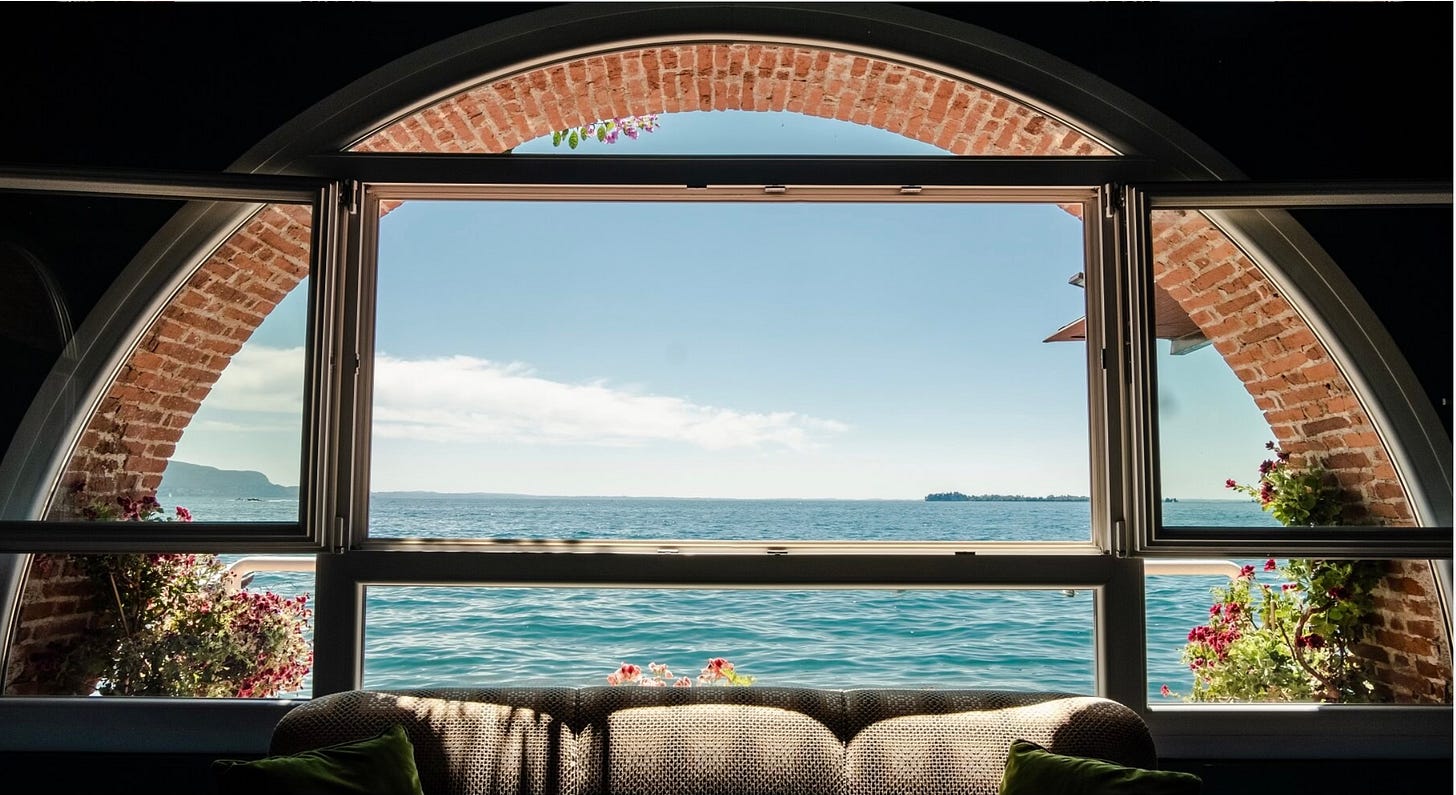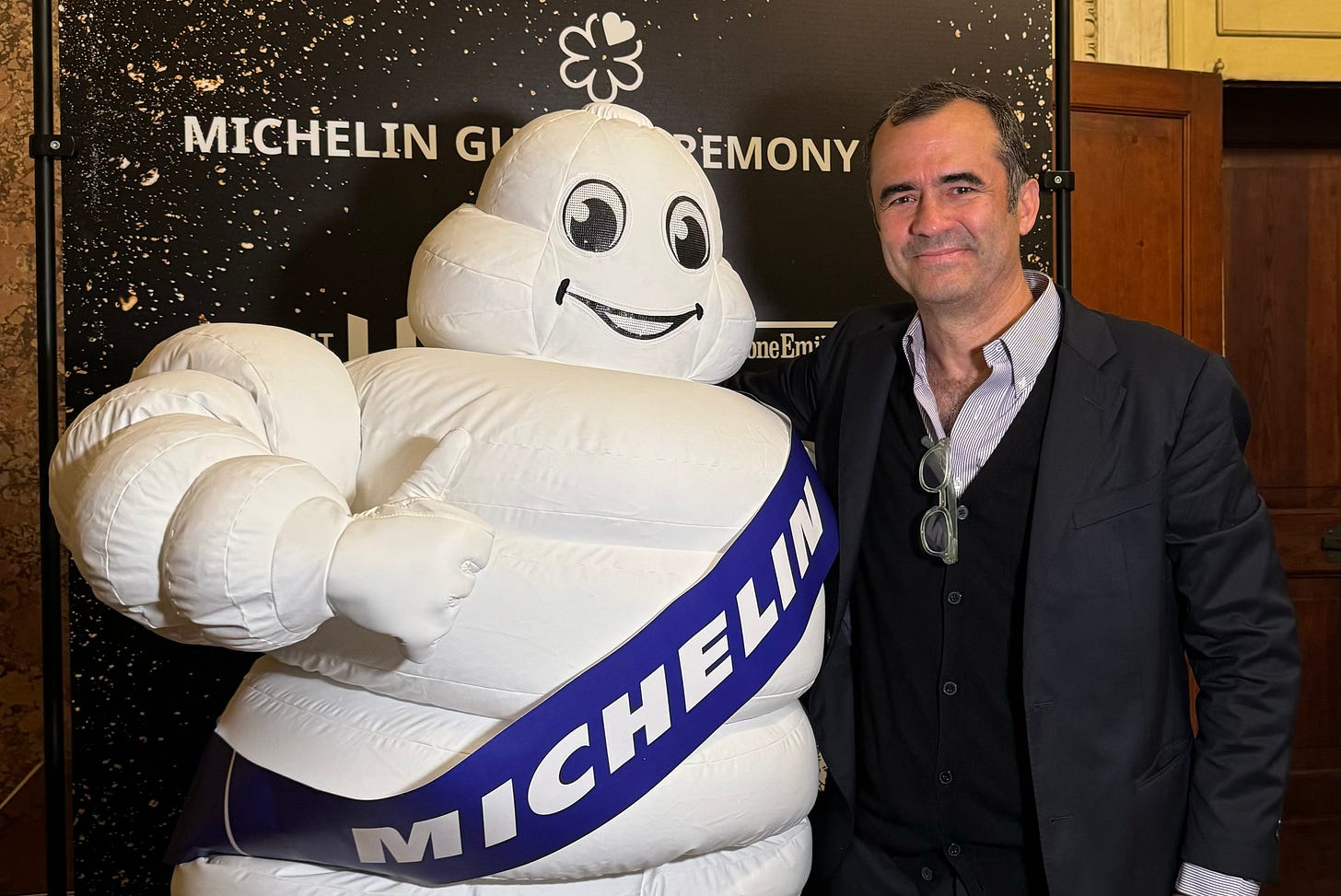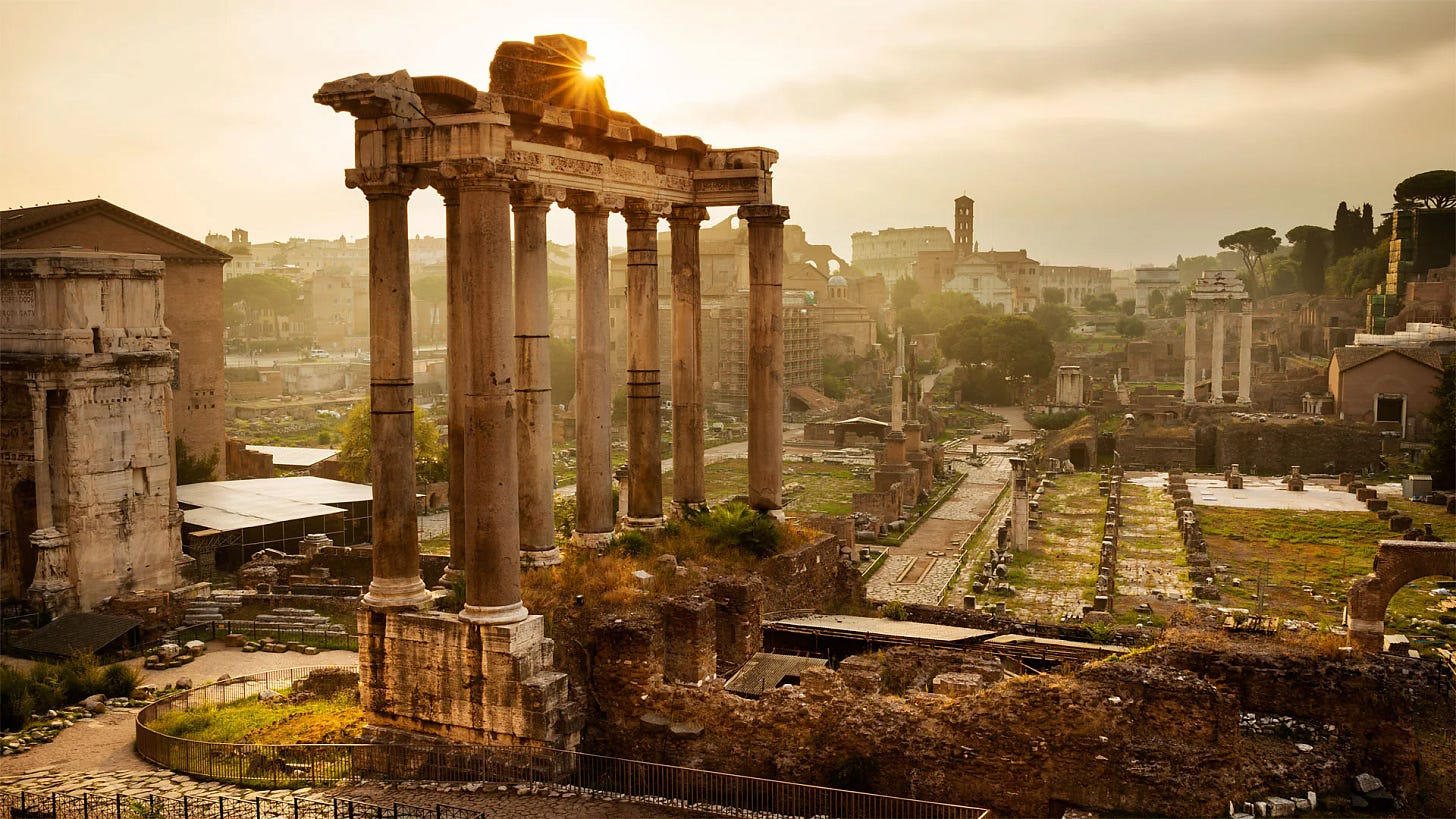Mad About Italy
Are the world’s foodies misunderstanding the cuisine of the ‘Bel Paese’? Or is it me?
My distaste for rankings of what amount to unrankable entities goes back to when I was the sports editor of my university newspaper.
The paper decided to launch its own poll of the nation's top college football teams. I organized it and voted in it. But how was I supposed to know how teams that would never play each other would stack up if they did?
It felt arbitrary. No, it was arbitrary.
These days, the curmudgeon in me smirks at definitive-sounding posts like “The 17 Best Beaches in Italy” or “Top 100 Wines of Italy 2024.” That’s not a ranking; it’s just made up precision. Where’s the nuance? The humility? The doubt?
Yet, when the latest edition of the San Pellegrino ranking of The World’s 50 Best Restaurants was unveiled last week in Turin my reaction turned surprisingly nationalistic.
How many Italian restaurants were in this year’s top 50? Six. Just six. Peru, Thailand, Spain, and France -- all of them had two restaurants appear on the list above the top Italian entry, Lido 84, which landed at number sixteen. A Danish restaurant scored higher. There was one from England.
Naturally, I smelled a conspiracy.

The man who ate the list
To make sense of it, I turned to Jeffrey Merrihue -- a 65-year-old Californian living in Spain and one of the world’s most seasoned commentators on elite restaurants.
Merrihue started the Xtrme Foodies newsletter and, over a fifteen-year span, he dined at all 165 restaurants that appeared on the Top 50 list. For five years, he was even part of the rotating group of experts who helped select the restaurants that made the cut each year.
But Merrihue didn’t see a conspiracy. He saw a global shift toward the cuisines of Asia and Latin America.
“Italy has gone from representing, let’s say, ten percent of Europe to 25 percent,” he said. “But the importance of Europe has slipped. In a way, you could say that’s a positive for Italy. It’s a case of ‘Is the glass half full or is it half empty?’”
Cacio e pepe with Mocha
I’m usually not a fancy restaurant guy.
Sure, I savor an expertly prepared meal, and I can be picky about wine. But it’s rare that I’ll find myself at one of the avant-garde spots on the Top 50 list or anywhere lauded for the formal rigor of the Michelin Guides
I’m not above punctuating a road trip with a quick lunch at the Autogrill. My favorite pasta is cacio e pepe, and more often than not, my dog Mocha is stretched out beneath my chair as I dine. I get a quiet thrill when an Italian waiter calls me capo or caro. And my go-to coffee bar? Its selling point isn’t the beans or the crema -- it’s that it’s open every day of the year.
All that said, I worked for years in high-end kitchens, and I have great respect for the skill and discipline of a top-tier chef and staff. Most trips I take includes one splurge meal, preferably with a well-chosen bottle of vino from the area. My favorite way to celebrate a birthday or a visit from old friends is with a meal to remember.
And I believe the best restaurants also serve a larger purpose. They are laboratories of taste and innovation, setting trends that ripple outward. They’re cultural ambassadors exporting a region’s identity. They also raise expectations -- of ingredients, of hospitality, of artistry. Like literature, art, music, or dance, they can enrich the cultural landscape, even for those who never walk through their doors.
Oscars vs. the Walk of Fame
The Top 50 list feels a little like the Oscars to me: buzzy, trend-driven, with surprise winners and rising stars. Making the list can turn an unknown chef into a sudden superstar.
Michelin, in contrast, is more like the Hollywood Walk of Fame: formal, legacy-driven, rooted in tradition.
Michelin awards top restaurants with one to three stars -- one star means a restaurant is “excellent,” two means it “merits a detour,” and three signifying it’s “worth a special journey.” It’s all based on anonymous visits by specially trained inspectors.

Last year, I attended the 70th anniversary of the Michelin Guide in Italy at the Teatro Luciano Pavarotti in Modena.
It was a big deal -- the Italian guide is Michelin’s oldest edition focused on a non-French speaking country. It was a Who’s Who of Italians dining. I couldn’t think of a notable Italian chef or restaurant critic who wasn’t there.
There were waves of honors -- Best Young Chef, Best Sommelier, Best Service, and more -- before announcing: 33 new Italian one-star restaurants, two new two-star restaurants, and Casa Perbellini 12 Apostoli joined an exclusive club to become Italy’s 14th three-star restaurant.
It was a feel-good event for any admirer of Italian cuisine.
According to Michelin International Director Gwendal Poullennec, the new stars recognized “exciting culinary experiences that showcase Italy’s exceptional quality of products and incredible variety of local ingredients.” I’ll buy that.
How did Italy stack up globally? The ceremony was focused only on Italy and didn’t say. But with a little research I learned that with nearly 400 starred restaurants, Italy’s third behind France and Japan (though with this year’s addition, It’s inching closer to second place).
Arguments are gold
Back to the Top 50, where, with a bit more research I learned Merrihue was mostly right and I was mostly wrong.
Six restaurants on the list is a lot -- more than any other country. Two more than last year. And it would have had seven, if not for a 2019 rule that prevents previous winners like two-time champ Osteria Francescana in Modena from reappearing.
My real gripe was probably that Italian restaurants failed to crack the top fifteen. But Merrihue brushed that aside.
“Really, how big is the difference between number five, number fifteen, and number twenty-five?” he asked. “Everybody who pays attention has an opinion. Everyone has a complaint.
“If they just listed the 50 restaurants alphabetically the arguments would all go away,” Merrihue said. “But it would also be much less exciting. Arguments are gold for the Top 50 list.”
And he predicted this year’s showing might only be a prelude for Italy.
“I think a restaurant like Piazza Duomo [in Alba, number 32 this year] will shoot up the list because voters came to Turin for the ceremony and many of them ate there,” he said.
“When I talked to people in Turin, they were all saying, ‘Well, I got here a week ago and was over in Venice and Verona, and now I’m going to head south.’”
He chuckled: “You can bet that when the 2026 list is out, Italy will have even more restaurants and they’ll be ranked higher.”
Post-scriptum:
For the last few days, I’ve been wondering why it bothered me so much that my adopted home country might have been snubbed by the Top 50 list.

I think I’ve figured it out. You see, there aren’t many areas where Italy is still truly world class. In culture and history? Yes, absolutely. I still think it’s the most beautiful country I’ve ever seen. And I’ll go to bat for the idea that it’s produced more than its share of geniuses over the centuries.
But in terms of something modern and relevant? The list is short.
I came up with three broad categories: (1) fashion and design, (2) luxury sports cars, and (3) food and wine. Tell me if you can think of something else. But among these three, you can guess which one matters the most to me.
Which brings me back to Jeffrey Merrihue, who I leaned on heavily to understand The World’s 50 Best Restaurants list.
Merrihue told me he’s coming to Rome in September, and I instinctively rattled off two or three restaurants I thought he should try. I’ll probably mention them in the comments later. But for now -- readers, comrades, curious souls -- where do you think he should go? Leave a comment below. 👇
Come back for another dispatch next week.




I’m too tired to recommend a restaurant, but here’s some food for thought on your piece (which I enjoyed). Pun was actually accidental. Probably subconscious. The best food experiences here, the most delicious, nourishing, sensual, and memorable are very very very rarely fancy. Hyper-curated artistic gourmet creativity is fun to experience, but I don’t even put it in the same category as dining. It feels more like a museum visit. Something clashes inside me when an Italian place is too spare, or ingredients and classic recipes aren’t instantly recognizable.
The 50 Best is a sponsored click-bait list that can do wonders for up-and-comers. That’s great! I prefer the bars list. I don’t follow the restaurants at all.
My top starred restaurant experiences are few and far between. Magnificent service, creativity, artistry on the plate. I remember everything except the flavors.
Another fantastic article Eric. Bravisimo!!